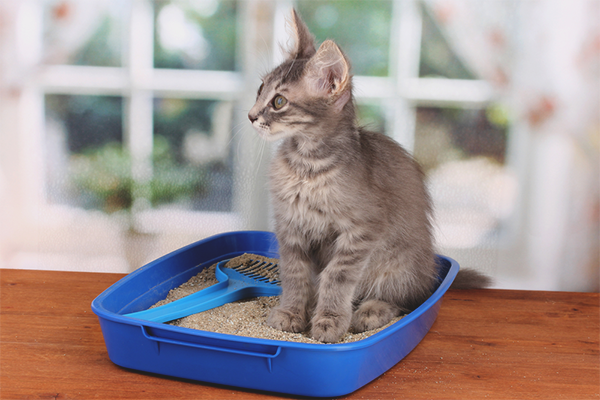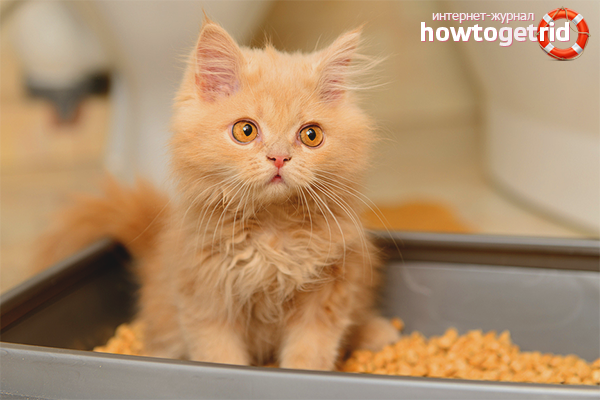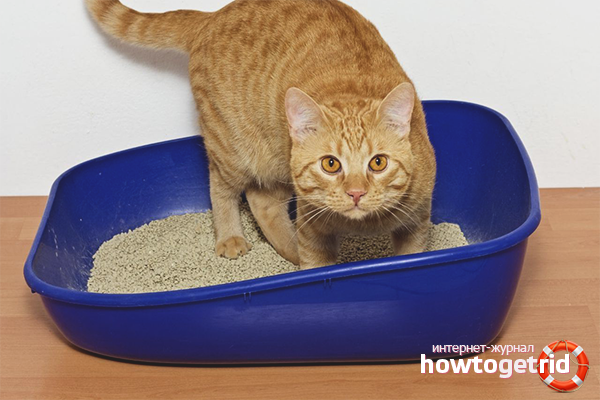The content of the article
When a cat appears in the house, the owner immediately raises the question of her training for the tray. Often, animals are in no hurry to relieve the need in the allotted place. As a toilet, four-legged friends use a bath, a sink, and even a stack of clothes. From here there is an unpleasant smell which is difficult for removing. The procedure of training to the tray requires strength and patience, it is necessary to take into account all the nuances. These include the right choice of tray and filler, the place of the future toilet, work with animals.
Which tray to choose
- Open tray. A feature of the open tray is the relative ease of construction. The mesh is inserted into the plastic bowl, which is easily removed during cleaning. The main thing is to choose a tray with high sides and a wide bottom.It should be based on the size of the cat, it should be placed in the device with four paws. It is worth remembering that you can not pour sawdust in the tray. The cat will row and spread them with paws throughout the apartment. Give preference to a granular formulation that absorbs liquid and absorbs moisture.
- Closed tray. Device for correcting cat needs is a kind of house with a window (door). The animal goes inside, and then performs the necessary procedures, without being caught by strangers. However, a significant disadvantage of closed trays is that a cat taken from the street will not be able to get used to defend the need in an enclosed space. To adapt this type is better to teach kittens. The inconvenience of use can be attributed to a complex structure. To clean the tray, it must be disassembled and cleaned, then re-assembled.
Which filler to choose
- To accustom the cat to the tray, choose a filler based on pressed wood or clay. The advantage of such compositions is considered low pricing.Also, the granules perfectly absorb the liquid and do not allow the appearance of odor.
- You should not use these types of fillers all the time, they are more suitable for the first schooling to the toilet. This recommendation should be followed because the tree crumbles, and the clay stains the paws of the animal.
- When the pet smells and begins to constantly walk on the tray, change the first type of gel filler (silicone). Do not be afraid of high prices, the granules block the smell well and pay off through practical use.
- Choose a filler made with large granules. It does not crumble, does not allow cat urine to the bottom of the tray. The crystals retain moisture in their structure, so that the toilet remains dry. The cat will not disdain after several uses, as well as crap near the tray.
Choosing a place for the tray
- Traditionally, the owners install a cat tray in the bathroom. Of course, a four-footed friend who lives in an apartment for a long time fits this place. However, the newly-made new settlers will not like the noise of the washing machine, the toilet bowl drain and the splashing water from the sink.
- At first, choose a quiet and quiet place in which the cat will not flinch at every rustle. Suitable pantry or a nook in the hallway. Later, when the pet gets used, move the toilet to the bathroom.
How to teach a kitten to the tray
If you brought a small kitten into the house, you should immediately begin training to the tray.
- You must contact the breeder or the previous owner for more information. Find out where the tray was installed, what filler was used, how often the animal met the needs in the allotted space. Taking into account the data obtained, purchase the same tray and granular composition.
- From the old dwelling you need to take a bag with a stool kitten. This may be a filler, soaked in urine, a newspaper, disposable cloth and so on.
- The resulting “material” should be placed in a tray in the present house. Mix the composition with the same filler that was used by the breeder.
- Introduce the kitten with the tray. Cuddle him, let him sniff the area. Now watch the behavior of the animal. After sleeping, drinking or eating, take it to the toilet immediately.
- In most cases, pet friendly small children grasp information on the fly. They begin to walk in the tray after 2-3 instructions.
What to do if there are "misfires"
If the kitten is not accustomed to the toilet or you brought it from the street, proceed as follows.
- Prepare a tray with a filler, put pet stools into it (a napkin soaked with urine, etc.). Watch out for animals. Each time, place it with its paws in the tray after waking up and eating.
- Pet your pet. Now take his paws in your hands, dig a filler with them. Such actions will revive natural instincts, the baby will understand how to use the tray.
- If an animal has committed an oversight, in no case should it be scolded. Collect excrement or blot urine with toilet paper. Place the “natural material” in the tray filled with.
- Wash place that is not intended to correct needs. If desired, use the special cat "repellers" that suppress the smell.
- Continue to carry the animal on the tray after eating and sleeping. When the kitten begins to meet needs in the allotted place, praise him.The first time is always on the check.
How to teach an adult cat to the tray
- As soon as you bring the cat into the apartment, let it settle down. Watch your pet carefully. Prepare the tray to meet all requirements.
- Pour the filler, sprinkle the granules with a special tool to teach the animals to the tray. Take the cat to the toilet, let it sniff everything.
- Dig the pet's paws filler to evoke natural instinct. Now watch your behavior. If the cat starts to dig carpet or linoleum, take it to the pot.
- It is possible that the manipulation will have to be repeated. If the cat breaks free and runs away from the “correct” toilet, close the bathroom door. Keep your pet until it resolves need.
- If the cat does not want to go to the place of your choice, messing around in another corner, move the tray there. Every day, slowly move the toilet in the direction you want, until you reach the bathroom or vestibule.
- When the cat shits in the wrong place, wet the napkin with urine, then take it to the tray. Do not remove until the animal has fully mastered the pot.
- In the case when several cats live in the apartment, select a separate (unused) toilet for the new guest. Smells of relatives can scare away a pet.
- If the cat shat in the wrong place, thoroughly treat this area with bleach or other cleaning agent. When the animal does not defecate in the tray, but next to it, wash the area with vinegar, soda or ammonia.
Useful recommendations
- Particularly obstinate cats can stain the bed. In this case, send the laundry to the wash, stick the animal's nose. Try to get rid of the smell by any means.
- Remove solid waste from the tray on time. Cats are clean animals, they will not go to a dirty pot. The same applies to the filler, do not let it get wet.
- After buying a granular composition, study the manufacturer's recommendations regarding the regularity of cleaning the toilet. For example, wood and clay filler need to be changed more often than silicone.
- You can teach the cat to walk on the diaper, bed it in the cavity of the tray. However, disposable wipes do not retain odors, you will spend a lot of money on constant cleaning of the toilet.
- Never scream at the cat. If the animal has gotten into shit on the bed, slap it with a thin newspaper or gently stick with its nose. Read a lecture about the correct behavior, take it to the pot.
Select the appropriate tray. An adult cat will suit an open view, for small kittens - a closed one. Begin schooling with wood filler, gradually switch to silicone. Take the pet to the right place immediately after waking up and eating. Do not scold the cat, let her choose the place of the toilet and set there a tray.
Video: kitty habits to the tray













To send